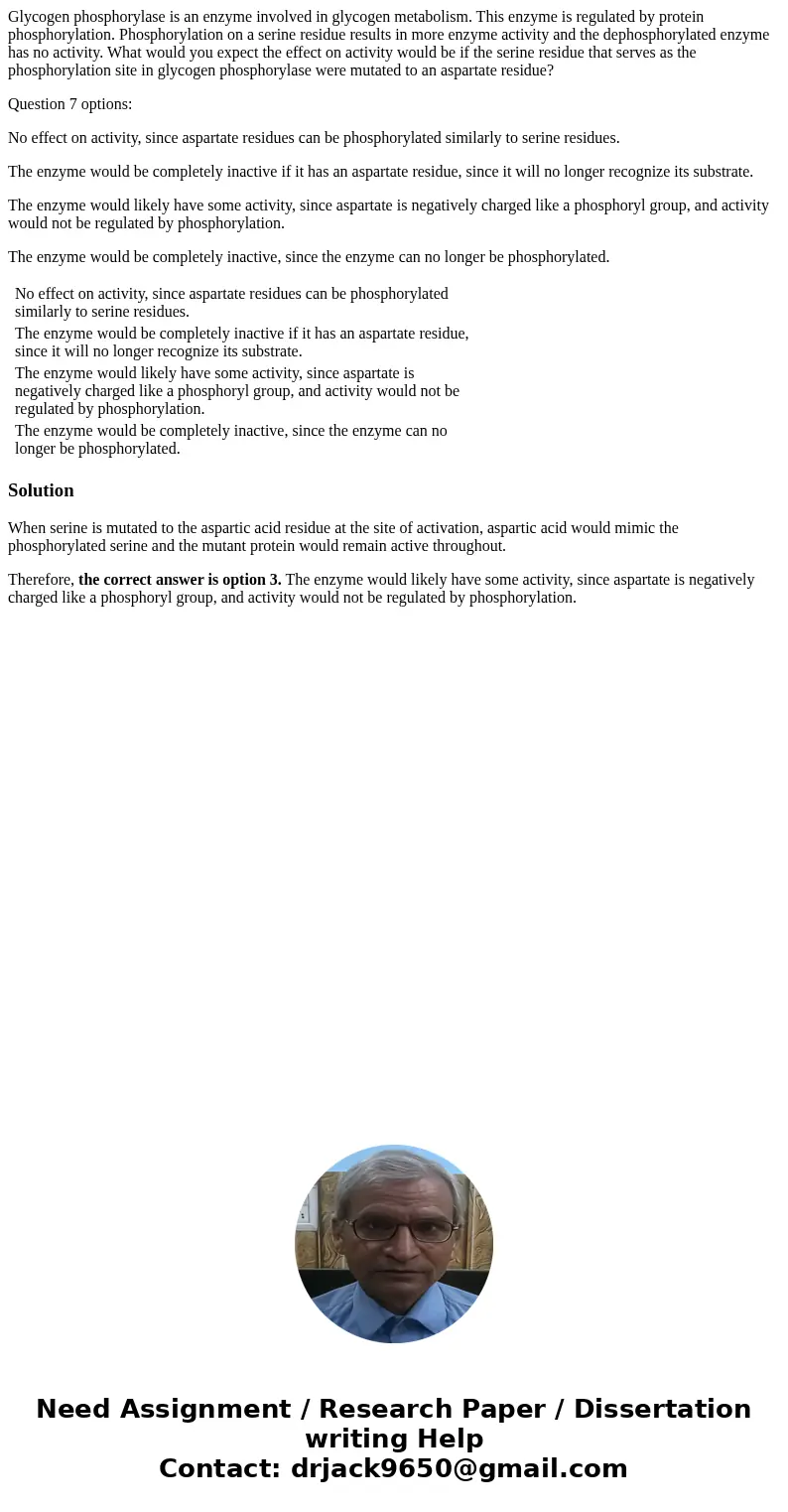Glycogen phosphorylase is an enzyme involved in glycogen met
Glycogen phosphorylase is an enzyme involved in glycogen metabolism. This enzyme is regulated by protein phosphorylation. Phosphorylation on a serine residue results in more enzyme activity and the dephosphorylated enzyme has no activity. What would you expect the effect on activity would be if the serine residue that serves as the phosphorylation site in glycogen phosphorylase were mutated to an aspartate residue?
Question 7 options:
No effect on activity, since aspartate residues can be phosphorylated similarly to serine residues.
The enzyme would be completely inactive if it has an aspartate residue, since it will no longer recognize its substrate.
The enzyme would likely have some activity, since aspartate is negatively charged like a phosphoryl group, and activity would not be regulated by phosphorylation.
The enzyme would be completely inactive, since the enzyme can no longer be phosphorylated.
| No effect on activity, since aspartate residues can be phosphorylated similarly to serine residues. | |
| The enzyme would be completely inactive if it has an aspartate residue, since it will no longer recognize its substrate. | |
| The enzyme would likely have some activity, since aspartate is negatively charged like a phosphoryl group, and activity would not be regulated by phosphorylation. | |
| The enzyme would be completely inactive, since the enzyme can no longer be phosphorylated. |
Solution
When serine is mutated to the aspartic acid residue at the site of activation, aspartic acid would mimic the phosphorylated serine and the mutant protein would remain active throughout.
Therefore, the correct answer is option 3. The enzyme would likely have some activity, since aspartate is negatively charged like a phosphoryl group, and activity would not be regulated by phosphorylation.

 Homework Sourse
Homework Sourse